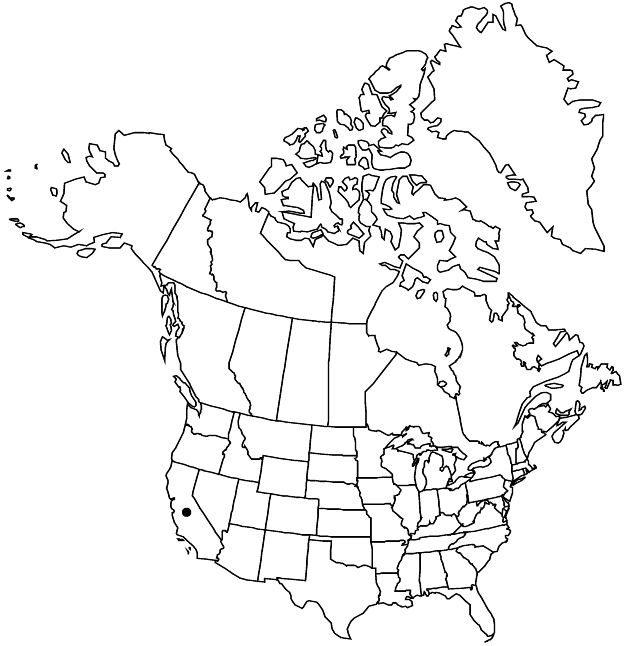Difference between revisions of "Hesperolinon drymarioides"
N. Amer. Fl. 25: 84. 1907.
FNA>Volume Importer |
FNA>Volume Importer |
(No difference)
| |
Revision as of 18:18, 24 September 2019
Herbs, (5–)15–20(–30) cm, puberulent, sometimes appearing hoary, stems less hairy distally; branches from distal nodes, alternate, virgate, 1 or 2 prostrate. Leaves persistent, whorled (usually in 4s), distal sometimes ± opposite; stipular glands absent; blade ovate or orbiculate, 4–8 × 3–6 mm, base keeled, clasping, margins minutely stipitate-glandular. Inflorescences: cymes dichasial and open proximally, monochasial and dense near tips, few-branched, internodes long proximally, short near apices, flowers congested; bract margins stipitate-glandular. Pedicels 0.5–2(–10) mm, scarcely longer in fruit, little spreading, not bent at apex. Flowers: sepals erect, tips spreading (even in bud), ovate to broadly lanceolate, 2.5–4 mm, usually equal, marginal glands inconspicuous, surfaces glabrous or with a few stiff, white hairs; petals widely spreading, white or lavendar to pink, sometimes streaked with deeper pink or rose purple, obovate, 3–5(–6) mm, apex notched; cup white, rim lobed between filaments and petal attachment; stamens exserted; filaments 2.5–3(–3.5) mm; anthers usually white, sometimes purple, white-margined, dehisced anthers (0.8–)1–1.5(–2) mm; ovary chambers 6; styles 3, white, (2–)2.5–3(–3.5) mm, exserted.
Phenology: Flowering May–Jul.
Habitat: Dry chaparral ridges or woodlands, serpentine soils.
Elevation: 100–1000 m.
Discussion
Hesperolinon drymarioides is known from only 20 populations scattered along the eastern slopes of the Inner North Coast Ranges of Colusa, Lake, and Napa counties. It is the most distinctive species in the genus. The persistent, ovate to orbiculate leaves arranged in well-spaced whorls, separated by long internodes, to the top of the main axis, with margins outlined by rows of tiny, stipitate glands, set it apart from all other species. The species is also unusual in often producing one or two long, decumbent, cyme-producing branches at the base of the main stem (H. K. Sharsmith 1961).
Selected References
None.
